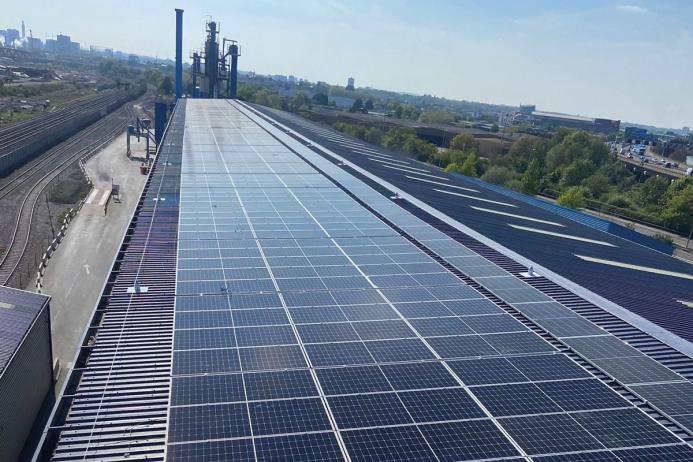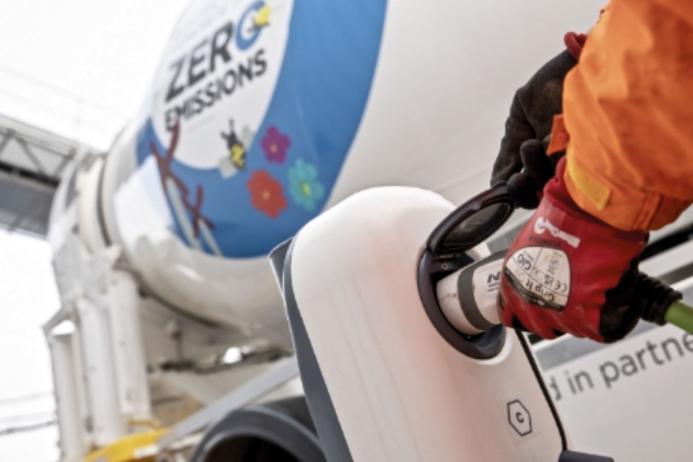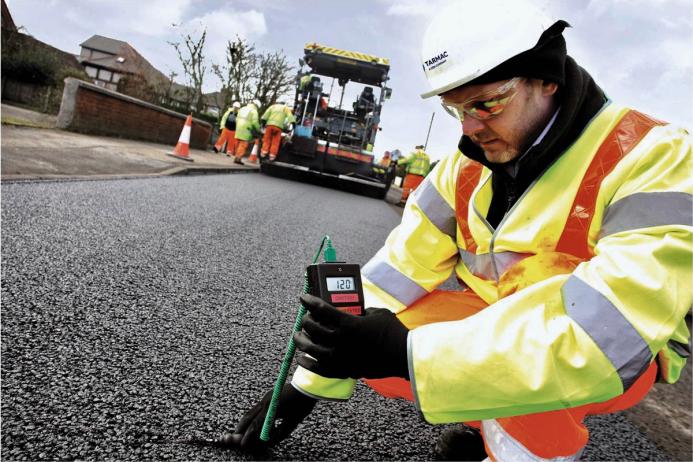Net zero is not a pipe dream, but it requires a clear plan

First published in the December 2023 issue of Quarry Management
By Rebecca Hooper, senior sustainability manager, Tarmac
Whatever the findings from the Intergovernmental Panel on Climate Change’s (IPCC) most recent report on climate change, one thing is certain: governments alone cannot and will not fix the crisis. Businesses have a major role to play, and an urgent increase in the pace and scale of change is required.
Tarmac have set a clear objective to be a net-zero business before 2050. Decarbonizing our operations, and providing products, services, and solutions that help society and the UK built environment tackle the climate emergency is central to our commercial strategy and corporate purpose.
We have taken early action to drive decarbonization across our business. Based on 1990 emissions levels, we have successfully reduced CO2 emissions by 35% per tonne of product.
However, in a climate emergency we are not standing still. It is vital to stay agile, to continually review and evolve our progress, and in 2021 we launched ‘Act’, our sustainability strategy that builds on our past achievements. Act sets out our commitments, objectives, and goals against three main themes: ‘People’, ‘Planet’ and ‘Solutions’. To demonstrate how we are delivering our strategy, our new roadmap to net zero outlines the steps we are taking to support the UK’s net-zero targets.
A bold 2030 target
To drive our transition to net zero, Tarmac have aligned with their parent company, CRH, to set a bold target to reduce absolute CO2 emissions by 30% by 2030 (from a 2021 baseline). This target commits us to one of the most ambitious reductions in absolute emissions in the UK construction materials industry. The Science Based Target initiative (SBTi) has validated CRH’s near-term science-based carbon emissions reduction targets in line with a 1.5°C pathway[1].
Scope 1, 2 and 3 CO2 emissions are included in our targets. In short, direct emissions from sources within our direct control – such as fuel used across our operational sites and in our vehicles – account for Scope 1 CO2 emissions. Scope 2 are indirectly created CO2 emissions, such as the electricity we purchase.
In addition to this, we are actively engaging with our suppliers to help us better understand and lower our Scope 3 CO2 emissions (which are indirect emissions up and down the value chain).
Delivering net zero is not a linear process and we will be drawing upon a mix of technologies that will play an active part in delivering our 2030 commitment. We recognize that some of these technologies are more costly to deploy, so it is important that there is a market demand for lower-carbon products and solutions that accounts for their whole life cycle.

Electrification and maximizing renewable energy use
Tarmac have taken the step to ensure all their purchased electricity is from guaranteed renewable sources certified with Renewable Energy Guarantees of Origin (REGOs). Additionally, we are installing on-site renewable electricity where appropriate and looking at using our land assets for renewable energy generation.
Electricity switching is important. We have signed up to the EV100 scheme and committed to transition 100% of our company car and van fleet to electric before 2030. We are also working to electrify operational equipment where possible. Every Tarmac site has an energy-efficiency target and proactively undertakes an annual energy-saving opportunities assessment.
Fuel switching and low-carbon manufacturing
Fuel switching and low-carbon manufacturing have for a long time enabled us to cut CO2 and deliver lower-carbon products for our customers.
Take asphalt production. We have switched over 60% of our plants to lower-carbon fuels, including natural gas, liquid petroleum gas (LPG), or hydrotreated vegetable oil (HVO). To further lower the CO2 footprint of asphalt by up to 15%, we have made warm-mix asphalt (WMA) the default product for customers instead of hot-mix asphalt (HMA). In addition, we are exploring the potential use of bio-binders to partially replace bitumen and achieve CO2 reductions, as well as polymer-modified bitumen and other solutions to deliver longer-lasting durability.
Cement production remains an energy-intensive process, but we are investing in new technology that allows our kilns to use up to 70% waste-derived fuels. These reduce fossil fuel use while also diverting waste from landfill or incineration.

Low-carbon product design
Low-carbon product design across our portfolio of materials, services, and solutions is also vital to our decarbonization programme. We are reducing the amount of CO2-intensive clinker in cement and concrete by developing new cement products, including Portland limestone cement, and investigating cements that use calcined clay. We are further optimizing the use of cementitious materials such as ground granulated blast-furnace slag (ggbs), fly ash, and limestone to lower the carbon footprint of concrete mixes.
Recycling
Recycling is another strategic enabler for decarbonizing our business. We want to design out waste from every stage of the product life cycle and extend the amount of waste we can reuse. Waste-derived fuels, waste materials, and by-products from other sectors serve as valuable fuels or raw materials to replace all, or a portion of, the virgin materials used in our products. For example, we are leading the way in recycling old road surfaces (recycled asphalt planings) into new. Each year we reuse about 7 million tonnes of waste from other industries as raw materials and fuels.
The path to net zero
The task of deeper decarbonization becomes more challenging and complex as businesses make progress. Consistent government policy with predictable financial support mechanisms will be needed to enable long-term decision-making.
Technology and regulation are evolving quickly, and no forecasting can account completely for the likely pace of innovation. Leading the way on innovation and partnering to drive new discoveries and developments will be key. We are actively working to understand the potential to use emerging technologies that are likely to form part of our path to net zero. This could include larger electric vehicles, hydrogen-fuelled vehicles, hydrogen or biogas for heat, and energy-storage technologies.
Underpinning this is the need for aligned investment in the infrastructure that businesses require to enable the decarbonization of manufacturing processes and along the value chain. This includes, for example: decarbonized transport; decarbonized electricity and energy; carbon capture, use and storage (CCUS); and infrastructure for CO2 transport.
Early engagement and collaboration are vital. We work in partnership with suppliers, contractors, and clients to unlock carbon savings and we play an active part collaborating with other businesses and academics in our key low-carbon industrial clusters, including the North West, South Wales, and Scotland, to unlock decarbonization at scale.
The IPCC has provided us with a global reminder of the climate challenges that we all face. Corporate engagement backed by clear plans setting out the transition to net zero is now vital.
Reference
Source: CRH annual report 2022: www.crh.com/media/4738/2022-annual-report-and-form-20-f.pdf
Subscribe to Quarry Management, the monthly journal for the mineral products industry, to read articles before they appear on Agg-Net.com








